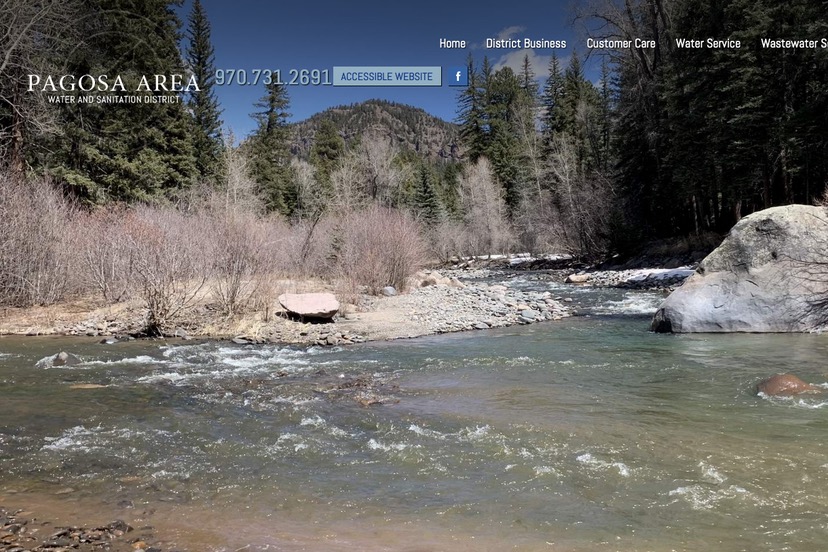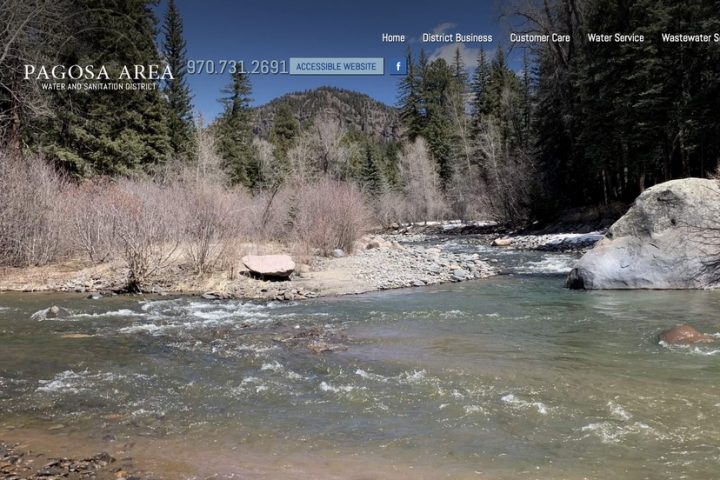When you pay your property tax bill — depending on where you live in Archuleta County — your tax donation may be supporting a number of local and regional government agencies, including the Archuleta School District… the Archuleta County government… the Pagosa Fire Protection District…the Pagosa Area Water and Sanitation District (PAWSD)… and the Upper San Juan Health Service District, the entity behind the Pagosa Springs Medical Center.
Another entity your tax dollars might be supporting is the San Juan Water Conservancy District, an appointed volunteer board that will be conducting a phone-conference ‘work session’ today, Monday May 18, at 5pm to discuss a draft ‘Strategic Plan’ — a plan that will presumably guide the district’s future efforts, once it gets approved by the board.
The public is invited to joint the conference call. The call-in number is 425-436-6200; the access code is 615196.
From the SJWCD website:
The San Juan Water Conservancy District was formed in 1987 under the Water Conservancy Act (Colorado Revised Statutes Title 37, Article 45) by a vote of the District electors in 1987. SJWCD is charged with providing water conservation, water resources planning, stream improvement, water rights protection, and development services within its service area, which includes most of the urban and suburban areas of Archuleta County, centered around the town of Pagosa Springs.
I currently serve as one of the volunteer SJWCD board members. I applied for a board seat to help ensure that the District’s tax revenues benefit the taxpayers, and it’s my belief that all of the SJWCD board members serve for a similar reason. We do not always agree on policy decisions, however. The development of a Strategic Plan should help the board clarify its mission going forward.
SJWCD is one of three water districts your local property tax donations may be supporting. Pagosa Area Water and Sanitation District (PAWSD) provides drinking water and sanitation service to about three-quarters of the county population; Durango-based Southwestern Water Conservation District serves the entire southwestern corner of Colorado.
SJWCD and PAWSD collaborated back in 2008 on the purchase of 660 acres of ranch property in the Dry Gulch valley, north of downtown, as the site for a future water reservoir. SJWCD has since assumed primary responsibility for development of the reservoir, when — and if — it makes sense to build one there.
When does it make sense to build a reservoir?
Presuming that we look at the data scientifically, instead of emotionally?
Some might suggest that it makes sense to build a reservoir when a community is threatening to outgrow its water supplies — and that was precisely the argument made by PAWSD and SJWCD back in 2008: that Archuleta County was facing a serious shortage of municipal water resources within the very near future, and that it therefore made sense to plan for a new reservoir to meet future demand.
From a 2007 feasibility study written by Durango water engineer Steve Harris, on behalf of PAWSD and SJWCD:
The purpose of the Dry Gulch Reservoir Project is to provide adequate water for the health and welfare of the Districts’ constituents due to unprecedented growth within their boundaries. Archuleta County is the third fastest growing county in Colorado.
We will pause here to note that the phrase “third fastest growing” was a reference to ‘percentage growth’. If a small town grows from 1,000 residents to 1,100 residents, it has experienced a growth rate of 10%. If a nearby city, during the same period, grows from 100,000 to 101,000, that city has added ten times as many new residents as the small town did — 1,000 instead of 100 — but the city has grown by only 1%.
Which community is actually growing “faster”? In his 2007 feasibility report, Mr. Harris allowed us to believe that Archuleta County was experiencing phenomenal growth. It would appear that certain people were eager to believe that assessment.
This 2007 feasibility study was, as far as I can tell, the only current report to which the SJWCD and PAWSD boards had access, when the two boards agreed to purchase 660 acres in the Dry Gulch valley. So we would have hoped that Mr. Harris’ data was accurate, and reasonably complete?
But unfortunately, the report painted a picture of a crisis that did not actually exist in 2007.
More from the Harris report (which you can download here):
The 2005 population of the SJWCD and PAWSD service areas is approximately 9,500 full-time residents, up from about 7,500 in 2000. As an example of growth, historic water connections with the Districts average about 300 per year, which is a growth rate of 5 to 7 percent. The current storage capacity in the District is 2,900 acre-feet. Studies indicate that an additional 12,500 acre-feet of storage capacity will be necessary by the year 2040 to meet the water needs of area residents. Since the lead time to construct a new reservoir is typically 20 years or more, work to construct a new reservoir must begin immediately in order to have a reservoir constructed when needed.
Mr. Harris notes here that PAWSD was adding “about 300 connections” per year in 2007, and that the growth rate of new connections was 5 to 7 percent. But there were a couple of things Mr. Harris didn’t tell us. First, a sizable number of those connections were for second homes — homes that might use PAWSD water for only a few weeks of the year.
And there was something even more important going on… which Mr. Harris neglected to mention in his 2007 report.
According to PAWSD records — which certainly should have been available to Mr. Harris in 2007 — PAWSD sold about 1,565 acre-feet of treated water to its estimated 7,500 ratepayers in 2001. That’s about 68,000 gallons per person.
But in 2007, when Mr. Harris wrote his report — claiming a District population of 9,500 full-time residents — PAWSD sold only 1,371 acre-feet of water to its ratepayers. Between 2001 and 2007, annual per-person water demand had dropped from 68,000 gallons per person to 47,000 gallons per person. Yes, the county population had grown — and the number of PAWSD customers had grown — but the amount of water PAWSD was required to treat had fallen substantially. The people of Pagosa Springs were apparently embracing water conservation in a big way.
According to PAWSD documents shared last February, PAWSD sold about 1,237 acre-feet of water to its ratepayers last year — less water than they sold in 2007. The 2019 demand appears to have been about 38,000 gallons per person. Less than in 2007… and much, much less than in 2001.


